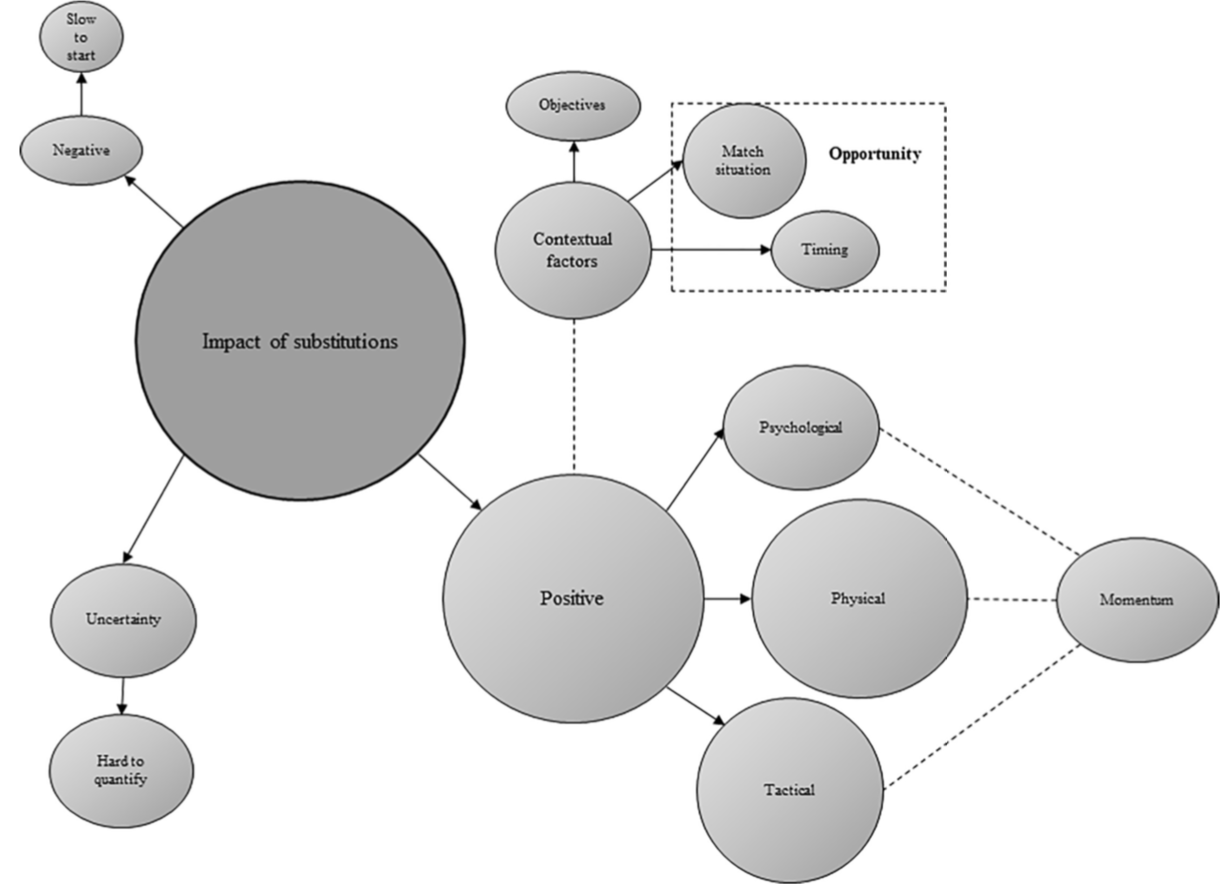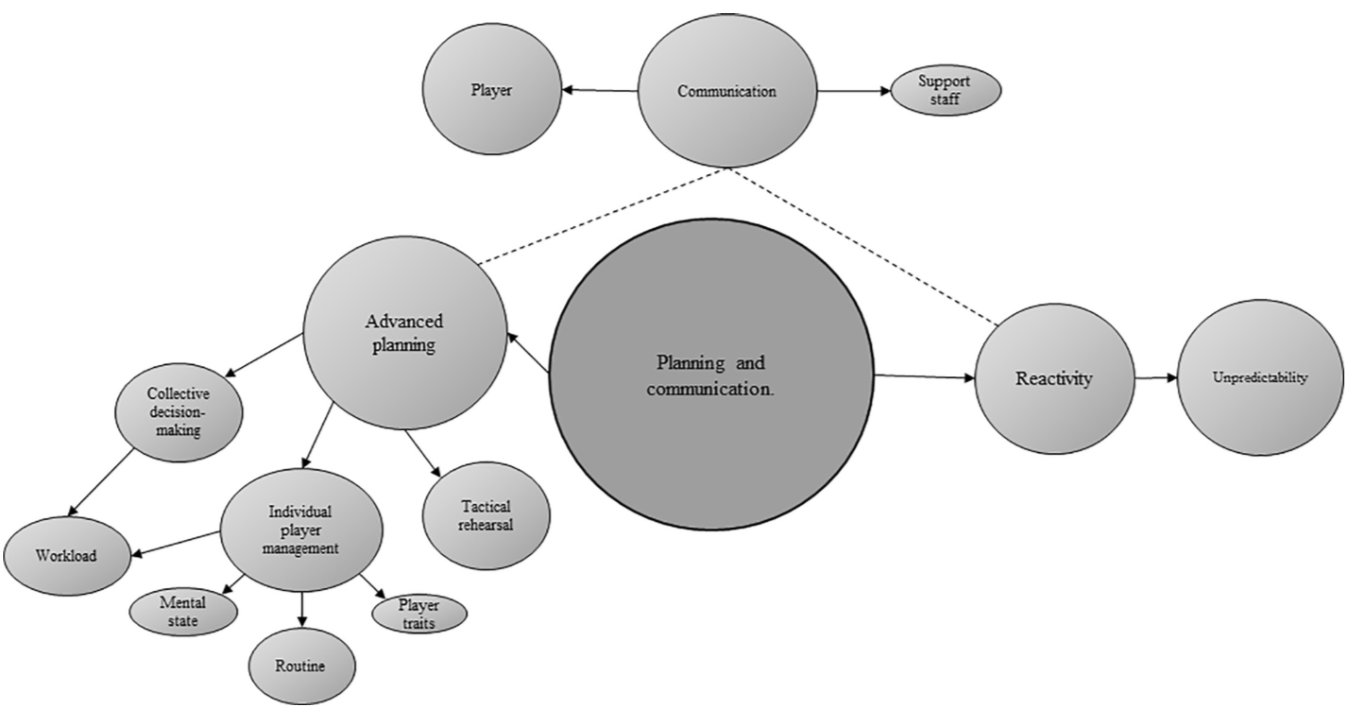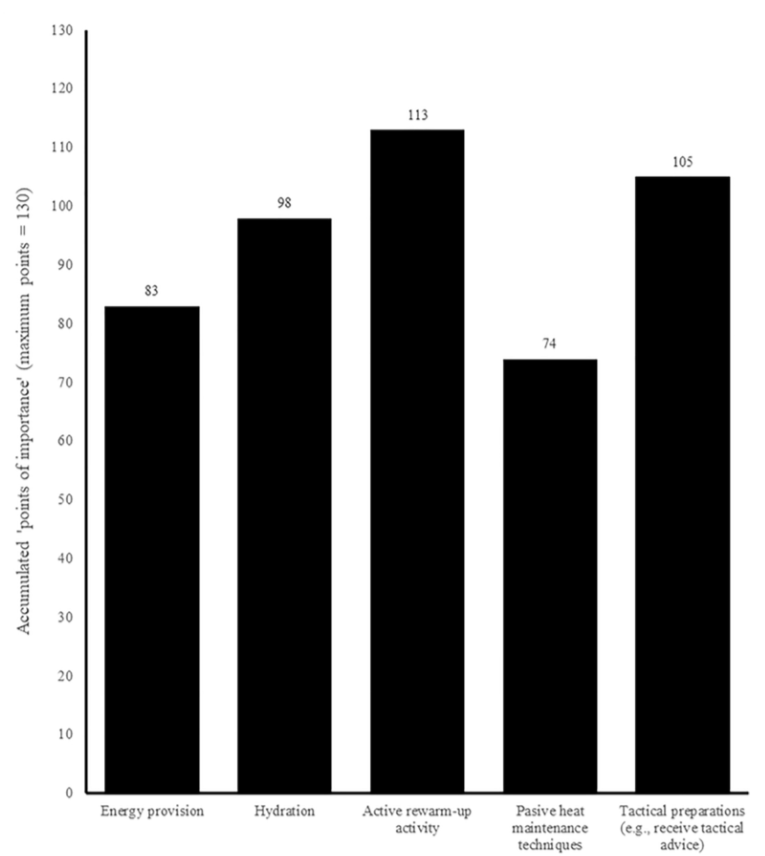For players who start a match, progressive declines in indices of physical (e.g., HSR, number of accelerations and decelerations, etc.) and technical performance (e.g., shooting and passing skills, etc.) are experienced throughout 90 min of soccer-specific exercise, with further deteriorations observed during extra-time. Given the likely importance of such actions in determining the outcome of a match, researchers and practitioners share an interest in elucidating means by which team performance may be maintained throughout the duration of match-play.
In this sense, soccer substitutes are typically introduced at half-time or during the second-half of a match, ostensibly with the primary objectives of offsetting the effects of fatigue, changing team tactics, or replacing players deemed to be injured or underperforming. However, given the length of time typically elapsing between cessation of the pre-match warm-up and a substitute’s entry onto the pitch (i.e., often ≥75–90 min), there exists the potential for physiological processes (e.g., acute losses in body temperature etc.) to negatively influence a player’s ability to execute important sport-specific actions, compared with if they had started a match.
“In substitutes, there exists the potential for physiological processes (e.g., acute losses in body temperature etc.) to negatively influence a player’s ability to execute important sport-specific”
In professional soccer research, surveys have been used to report the perceptions and practices of practitioners in relation to topics such as player monitoring and injury prevention, warm-up and rewarm-up strategies, and the extra-time period.
The aim of this study was to use both qualitative and quantitative methods to examine the perceptions and approaches of applied practitioners regarding substitutes in professional soccer.
Thirty-three practitioners completed one of two surveys (each requiring both open and closed questions to be answered), depending upon whether their primary role related mostly to tactical (‘tactical practitioners’; n = 7) or physical (‘physical practitioners’; n = 26) aspects of player/team management. Thematic content analysis of responses identified four higher-order themes: ‘impact of substitutions’, ‘planning and communication’, ‘player preparation and recovery’ and ‘regulations’.
RESULTS
Impact of substitutions (fig. 1):
- ‘Changing team tactics (e.g., formation)’, ‘increasing the pace of play relative to other players’, ‘replacing underperforming/fatigued players’, and ‘replacing injured players’ were each selected by six out of seven (86%) tactical respondents as reasons motivating their use of substitutions.
- 86% percent of practitioners believed that substitutes are important in determining success during soccer match-play, with the primary justification being the perceived ability of such players to provide a physical and/or tactical impact.

Figure 1. Thematic emergences depicting practitioner responses concerning the impact of substitutions (n = 33). Prevalence is indicated by size.
Strategic planning and communication (fig. 2):
- Contextual factors such as the match situation, timing of introduction, and players undergoing adequate pre-pitch-entry preparation, may be important for realising such aims.

Figure 2. Thematic emergences depicting tactical practitioner responses concerning planning and communication (n = 7). Prevalence is indicated by size.
Physical preparation and recovery (fig. 3):
- However, contextual factors such as the match situation, timing of introduction, and players undergoing adequate pre-pitch-entry preparation, may be important for realising such aims.
- Although many practitioners believed that there was a need for substitutes to engage in bespoke non-match-day preparations and recovery strategies that differ from starting players, logistical considerations, such as scar- city of resources, often limit their scope.
- 96% of respondents indicated that substitutes frequently perform extra conditioning sessions to account for deficits in high- speed running loads compared with players exposed to a longer period of match-play.

Figure 3 (fig. 5 in the full text). Physical practitioners’ perceived importance of preparatory strategies implemented between kick-off and pitch-entry (n = 26).
FSI STATEMENTS
- A wide spectrum of opinions by practitioners are collected which suggests that a greater number of investigations in this regard are necessary to clarify the lack of knowledge.
- Despite the fact that substitutions represent an important factor in determining team success, and that the introduction of substitutes can substantially influence the outcome of a match, the information generated by researchers is not applied by practitioners.
- “Preparatory strategies” is the topic most required by practitioners to investigate. In fact, practitioners considered “active rewarm-up activity” as the most essential. In this sense, many other preparatory strategies are necessary to implement for an adequate pitch-entry.
- Practitioners do not follow the general guidelines with regards to substitutes’ physical preparation and recovery, this data suggests that more scientific information applicable to the field is necessary and better dissemination of the literature already published.
In the FSI master we will offer you useful, scientific knowledge applicable to real situations in relation to substitutes.





